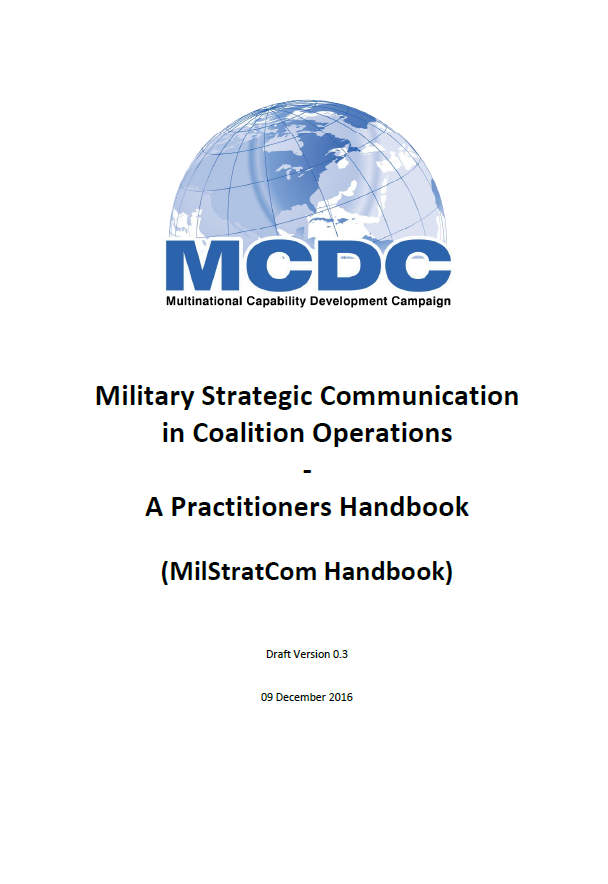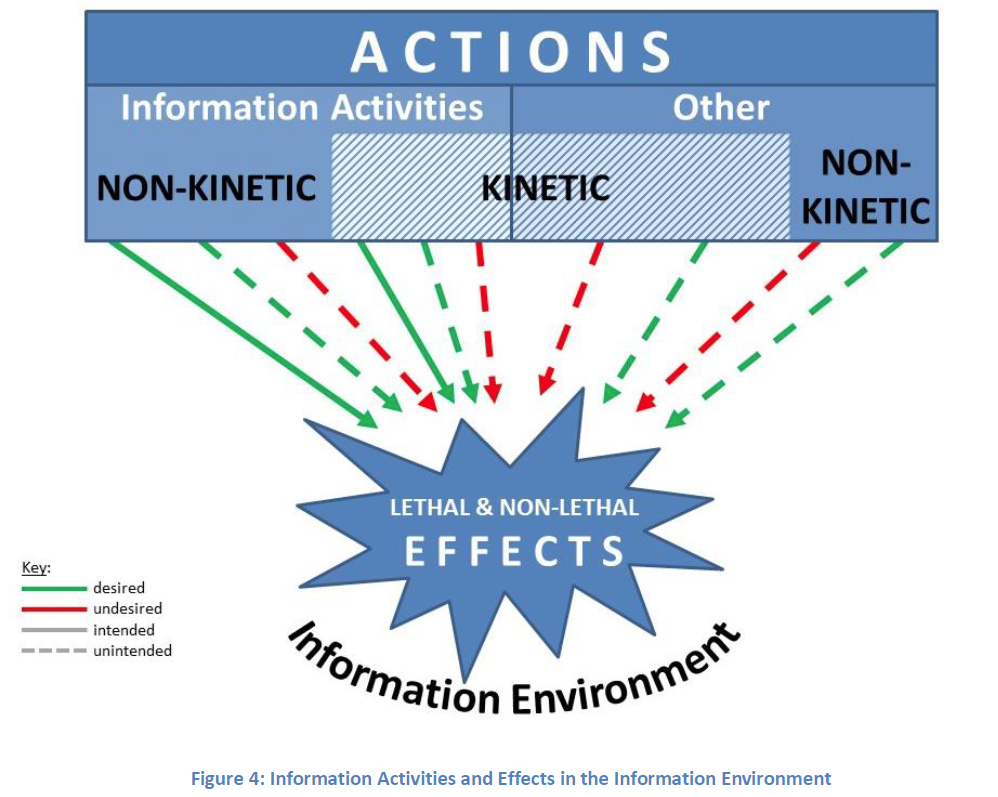Cell phones, smart phones, the Internet, and GPS are increasingly available and are changing the nature of conflict, even in remote areas. Information can now reach out in new ways to global audiences because of the revolution in Information Technology (IT), particularly using cell phones and smart phones. The revival of hybrid warfare manifested in recent developments in the international security environment – such as the Arab Spring, the Ukrainian crisis, the rise of Jihadist-Salafist terrorism, and the European migrant crisis – demonstrates the power of communication, broadly based on IT advantages: messages and perceptions become predominant of physical engagements and strongly impact the behaviour of people. Orchestrated activities carry messages and have a crucial effect on 55 public opinions, decision-making processes, and domestic support.
From a communication perspective, military operations are part of a vicious circle (see Figure 1): they result from political decisions, are part of state-funded activity, and are under constant observation of the media who strongly affect public opinion, which in turn influences political discussion and decision-making.
Military success can be either directly aided or challenged by activities in the Information Environment. Military communicators need to convey the message that operations are in line with political decisions and serve the interest of the involved nations and their populace. In this respect, they may act as guardians of the political Narrative, ensuring that political will is reflected in words and deeds throughout operations planning and execution.
Today’s military operations are also challenged with a fragmentation of communication capabilities and insufficient integration of communication with operations planning, resulting in fragmented Information Activities by multinational partners, insufficiently harmonised for achieving objectives in the Information Environment that support common strategic objectives. In the last decades the multinational community of communication practitioners struggled to overcome this challenge by introducing coordination mechanisms. For instance, the military Info Ops function and later StratCom were designed to provide an analysis, advice, coordination and oversight capacity for communication capabilities at various levels.
However, relying solely on the coordination of capabilities and actions treats the symptom more than it constitutes a solution to the underlying problem. In addition, there is still a lack of consideration of the comprehensive scope of non-media activities that may help to create desired effects from a communication perspective.
Coalition partners need to be able to gain enhanced situation awareness in the Information Environment; develop and issue timely, relevant and feasible communication guidance; implement communication plans in a consistent, transparent and flexible manner; and take emerging communication practices and technology into account.
All this finally led to the concept of integrated communication and communication management – an approach to adequately respond to and shape developments in the Information Environment from a multinational coalition and comprehensive approach perspective.
…


